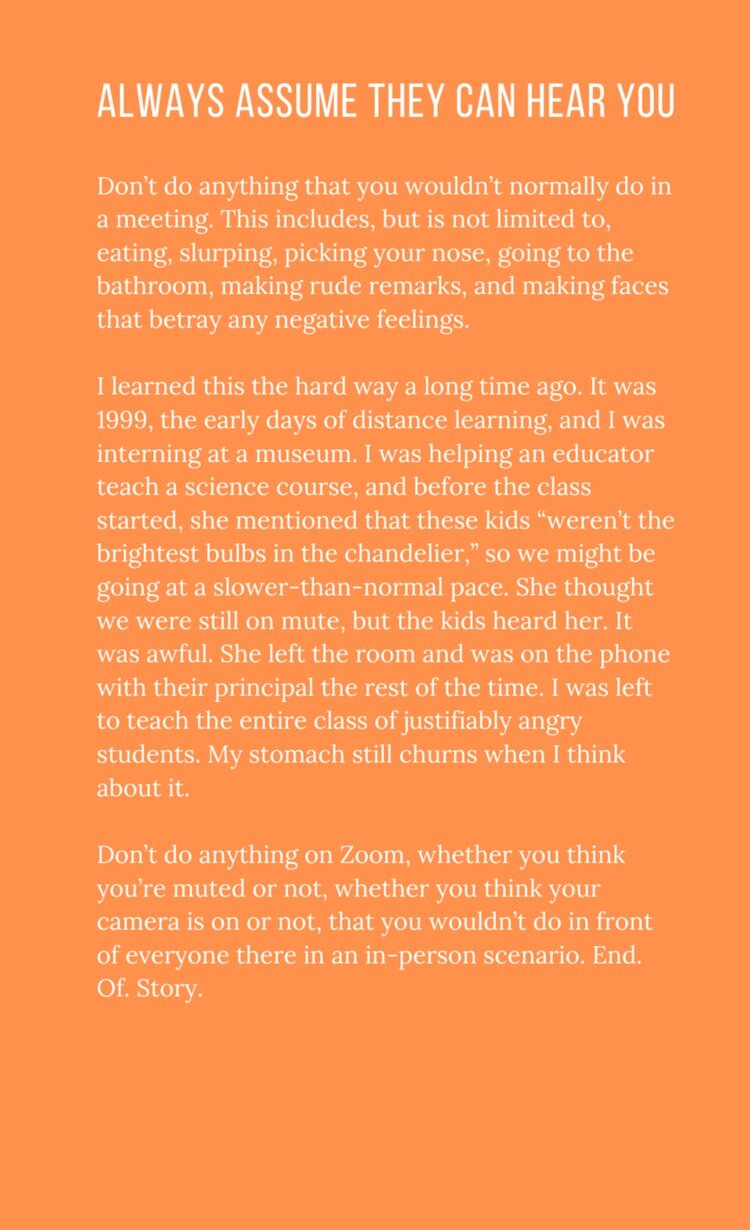Nobody is immune. Learn how to keep yourself safe.
October 28, 2020
By Rachel Smith
A few weeks ago, I was on a Zoom call with some clients and coworkers when my son walked into my office. The clients were relatively new, my son is relatively loud, so I really just wanted to get him back into the living room as soon as possible. “Why don’t you go get some candy,” I whispered…directly into the mic on my headset that was not muted. I joked about it, and then silently hoped they couldn’t hear what sounded to me like thousands of jelly beans being poured into a bowl in the next room.
So, that might not have been my strongest work or parenting moment, but I do know that it’s something nearly everyone today can relate to. “Control what you can control” is one of Maestro’s pillars that we teach during every training, but the events of the past seven months have made it feel like we aren’t in control of anything.
Part of controlling what you can control is doing a tech check before every meeting or presentation. Now that we’re all on Zoom, the tech check is more critical than ever. At the beginning of the pandemic, everyone was getting used to navigating Zoom. People were understanding during awkward meetings or when they had to remind others to mute themselves. It’s pretty clear, however, that Zoom meetings and presentations aren’t going away anytime soon. That means that it’s time to be just as prepared and just as professional in your video pitches and presentations as you were in person.
A year ago, if you arrived at a pitch meeting and all technology failed you, it would have been difficult, but the meeting would have gone on. Today, we’re relying completely on technology to communicate with prospects. Without it, there is no pitch. That’s why it’s crucial to check your technology.
Get everything up and running before anybody else even joins your meeting. It looks bad if several individuals from the company you’re pitching to are on the call before you show up. Start early, have your presentation queued to go, and welcome attendees as they join.
Make sure everyone can hear you and see you before you dive in to your pitch. You should test your audio and video before others join, and then check again once participants arrive. Be sure your volume is at a comfortable level for everyone.
I recently sat in on a presentation during which I watched a founder talk about his product. Everything seemed fine until he referred to a chart that he clearly thought we could see. He had an impressive presentation ready to go, but had forgotten to share his screen.
Make a point of verifying that others can see what you intend them to. Be specific so as to avoid any confusion. Something like, “Can you all see a PowerPoint with your company logo in the bottom left-hand corner?” ensures others know what should be visible on the screen.
What’s the first thing you do when an app on your phone won’t work or your computer freezes? Turn everything off and then turn it back on. Most of our electronic devices stay on all the time. Be prepared to restart your device if your pre-meeting audio/video check encounters glitches. That means working in extra time in case this is necessary. Close anything that you don’t need to have open so that your presentation runs as quickly and smoothly as possible.
Recording the meeting or presentation is always a good idea for future reference. Before you hit “record,” make sure you have enough memory. Video takes up a lot of space on your computer. Don’t promise your prospect a recording of your pitch and end up with only half of your pitch to deliver. Finally, be sure all participants are aware you plan to record.
Pay attention to your appearance if you’re going to be on a video conference. Some recommendations are the same as those that apply for in-person meetings, but others are specific to being on your computer.
When you sit at your desk, the video camera should be right at eye level or slightly above. Nobody wants to look up your nose or down at your forehead.
Oh my gosh, do I have something on my face? Is there salad stuck in my teeth. I have about five inches of roots showing. STOP LOOKING AT YOURSELF!! Try your best to look at the camera and not at your own image. You will obviously want to look at other meeting members for some visual cues, but most of your “eye contact” should be with the camera so that it looks like you’re looking at your audience.
When you have meetings with the outside world, wear what you would have worn in the outside world. Just because you’re currently living in leisurewear does not mean it’s appropriate for a meeting. We’ve all heard about individuals wearing a dress shirt and boxers. What happens when you have to get up and let the barking dog out of the house? Dress appropriately. This applies to you and anyone who might be strolling through the background. It’s best to situate your computer so that there won’t be any people (or pets) visible behind you.

You know those crime stories where a witness wants to speak out but they don’t want their identity known? They sit in a chair in the dark. That is not a good look for Zoom. Pay attention to your lighting so that you don’t look like you’re part of the witness protection program. Too dark and too light can both make you difficult to see, but backlighting is definitely worse.
Many people are using Zoom backgrounds to make their space appear more professional. This can be a great solution, but it’s not going to work for everyone and with every background. First, these backgrounds take up a lot of bandwidth. You have to have high-quality WiFi in order to make it work.
Second, make sure the background works with your coloring. Dark hair on a dark background can be problematic, as can light hair on a light background. I have a client who has a professional office background on when we chat, but his hair sometimes completely disappears. The point of a background is to look professional and not have people distracted by what’s really around you. Your hair popping in and out of existence is pretty distracting.
Most of us were not expecting to be working from home. Many of us don’t have an ideal space to be working from. Do your best to clear your workspace, and be cognizant of what’s in the background. At the very least you can make sure laundry and toys aren’t visible. If you have money that would have otherwise been spent on travel, you might consider putting it toward your home office instead. Even a portable screen or sheet is helpful, especially if you can’t have your back to a wall and other people share your space.
If you’re going to need to refer to a document while in a meeting, have it pulled up before you begin, ideally on a second screen. Have you ever watched someone on a video call search for a file on their computer? The squinting, furrowed brow look is not flattering. Reading something on screen can make you look angry, while reading something elsewhere can make it look like you are distracted. Pretend your camera is a person and act accordingly. You can even put a sticky note with a face on it above your camera if that helps.

Some etiquette rules for Zoom calls would make sense in any meeting, but for some reason are often forgotten on video conferences. Others are more specific to the working-from-home situation we’re in.
Would you host a meeting and not be there to greet attendees? Would you leave a gathering before your guests? Of course not. Similarly, when you are hosting a meeting or conference, you should be the first to arrive and the last to leave. This way you can make people feel welcome when they join and make sure nobody gets cut off at the end.
Would you check your texts during a face-to-face meeting? I hope not. Don’t do it while on a video conference either. You might think you’re being sneaky, but everyone can tell you’re distracted by something. It’s frustrating to hear someone’s phone dinging throughout a presentation. Especially if you are meeting with a client or prospect, they need to know they have your full attention.
Even though you’re keeping your language professional, mute yourself when you’re not speaking. It makes it easier for others to be heard.
While everyone knows you’re at home, you still need to be cognizant of the noise around you. Don’t run the washer if it’s in the next room. Turn off your fan because the whirring noise is distracting. When we’re mic’d and wearing ear buds, the noises in our environment can sound very loud to others on the call.
We have all made some mistakes as we get used to having most of our interactions on Zoom, Teams, Meet, etc. Some of them are funny, and others are painfully cringeworthy. Zoom meetings, pitches, and presentations are now part of everyday life and will be for some time to come. The excuse that we’re all new to this isn’t going to work much longer. You and your team need to be just as professional and prepared on a video call as you are in person.
Reach out to mastery@maestrogroup.co for strategies that will add zip to your Zoom pitches.
Get the Maestro Mastery Blog, straight to your inbox.